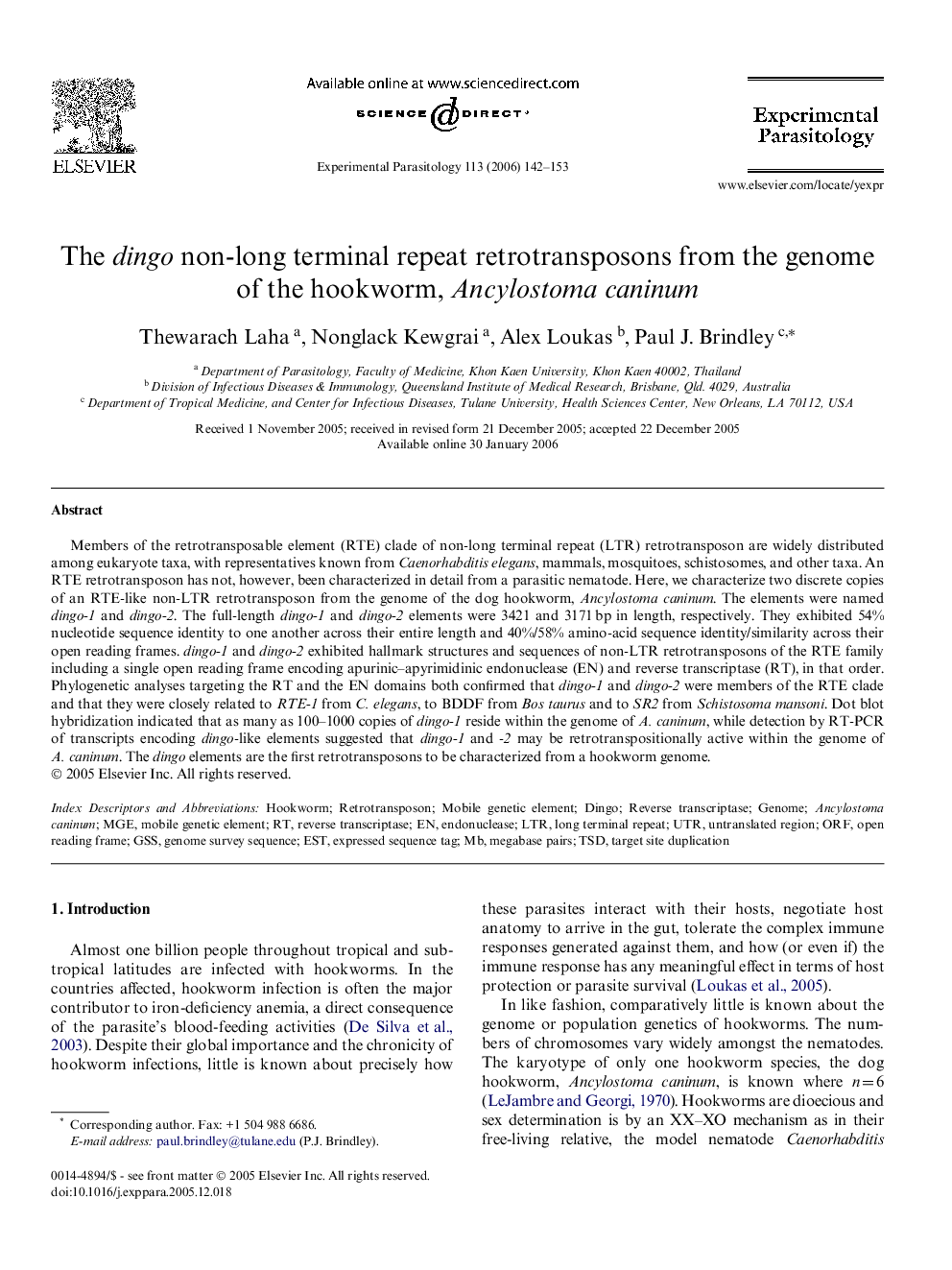| Article ID | Journal | Published Year | Pages | File Type |
|---|---|---|---|---|
| 4372193 | Experimental Parasitology | 2006 | 12 Pages |
Members of the retrotransposable element (RTE) clade of non-long terminal repeat (LTR) retrotransposon are widely distributed among eukaryote taxa, with representatives known from Caenorhabditis elegans, mammals, mosquitoes, schistosomes, and other taxa. An RTE retrotransposon has not, however, been characterized in detail from a parasitic nematode. Here, we characterize two discrete copies of an RTE-like non-LTR retrotransposon from the genome of the dog hookworm, Ancylostoma caninum. The elements were named dingo-1 and dingo-2. The full-length dingo-1 and dingo-2 elements were 3421 and 3171 bp in length, respectively. They exhibited 54% nucleotide sequence identity to one another across their entire length and 40%/58% amino-acid sequence identity/similarity across their open reading frames. dingo-1 and dingo-2 exhibited hallmark structures and sequences of non-LTR retrotransposons of the RTE family including a single open reading frame encoding apurinic–apyrimidinic endonuclease (EN) and reverse transcriptase (RT), in that order. Phylogenetic analyses targeting the RT and the EN domains both confirmed that dingo-1 and dingo-2 were members of the RTE clade and that they were closely related to RTE-1 from C. elegans, to BDDF from Bos taurus and to SR2 from Schistosoma mansoni. Dot blot hybridization indicated that as many as 100–1000 copies of dingo-1 reside within the genome of A. caninum, while detection by RT-PCR of transcripts encoding dingo-like elements suggested that dingo-1 and -2 may be retrotranspositionally active within the genome of A. caninum. The dingo elements are the first retrotransposons to be characterized from a hookworm genome.
